churches
Orthodox Christians are convinced of the unity of the Orthodox Church. This conviction is expressed by the words of the Creed, where the Church is called “one.”
At the same time, there is every reason to talk about Orthodox churches in plural. The reason for such semantic strangeness is not simply the polysemy of the word “church” (as you know, church is also called christian temple). The main thing here is the special perception of the concept of “church” by Orthodox Christians. From the first years of Christianity, even a small community of believers called itself a church - “the assembly (of the called).” Gathering to perform divine services and sacraments, the community felt the participation in its life of the entire fullness of the Universal Church - people who accepted God into their hearts through His Son, wherever and whenever they lived and whatever nations they belonged to, and even spiritual beings ( angels and archangels).
Included local churches, which themselves elect their leaders and are therefore called autocephalous (from the Greek “auto” - “himself” and “mullet” - “head”), there are autonomous churches that enjoy broad self-government. The United Ecumenical Orthodox Church cannot be headed by one person - Orthodox Christians recognize only Christ as its head. Critical questions church life must be decided at Ecumenical Councils - meetings of representatives of all local churches (the last council, which the Orthodox Church recognized as Ecumenical, took place in Nicaea in 783-787). Issues of vital importance to local churches are resolved at local councils - meetings of representatives of dioceses.
The Modern Orthodox Church includes 15 local churches and three autonomous ones. Information about them is provided as of 1994.
Orthodox Church of Constantinople,
or Patriarchate of Constantinople
After Constantine the Great moved the capital of the Roman Empire to the Asia Minor city of Byzantium and named it by his own name - Constantinople (330), the role of the Bishop of Constantinople began to grow rapidly. II Ecumenical Council 381 recognized him as the second place among Christian bishops after Rome; at the beginning of the 5th century he began to be called the patriarch, and in the 6th century. - Ecumenical Patriarch. Now his full title is Archbishop of Constantinople, New Rome, Ecumenical Patriarch. His residence is in Istanbul.
Many modern Orthodox churches have become local, breaking away from the Patriarchate of Constantinople. In 1994 it included four metropolises in Turkey; dioceses on the island of Crete, a number of islands of the Aegean Sea, in Northern Greece, in Western Europe, Northern and South America, Australia, New Zealand; Holy Mount Athos (Aion Oros peninsula in Greece) with its monasteries.
Besides, in Patriarch of Constantinople It is part of the Autonomous Finnish Orthodox Church. It is headed by the Archbishop of Karelian, and all of Orthodox Finland is divided into three dioceses.
Divine services in most dioceses of the Patriarchate of Constantinople are performed according to the Gregorian calendar (according to the “new style”). The monasteries of Athos and some parishes of the Russian Archdiocese of Paris use the Julian calendar ("old style"). However, the services of the Easter cycle - the holiday of Easter (the Resurrection of Christ), the pre-Easter and post-Easter periods - are celebrated by all Orthodox churches on the same days (the exception is the Finnish Church, which celebrates Easter at the same time as Western Christians).
In the churches of the Patriarchate of Constantinople, services are conducted in Byzantine Greek, and in emigrant dioceses (Russian, Ukrainian, Carpathian, etc.) - in Church Slavonic and national languages, including the main Western ones. The Finnish Church serves in Finnish and Karelian.
Alexandria Orthodox Church,
or Patriarchate of Alexandria
The Primate bears the title of Pope and Patriarch of Alexandria and all Africa. The episcopal see in Alexandria (Egypt) existed since the 2nd century. Primate of the Alexandrian Church in the 5th century. began to be called the patriarch. The Patriarchate unites nine metropolises in different countries Africa (including four metropolises and one archdiocese in Egypt). Services are performed according to the Gregorian calendar in Byzantine Greek, Arabic and national languages African peoples(Swahili, etc.). In South African parishes they also serve English language and Afrikaans.
The Church of Alexandria has metochions - areas with temples and living quarters - in Athens and Odessa.
Antiochian Orthodox Church,
or Patriarchate of Antioch
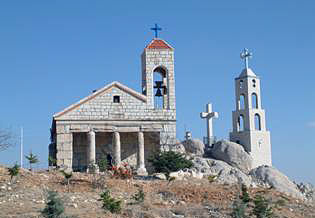 Founded by the works of the holy apostles Peter and Paul in the 1st century. It was in Antioch, which in ancient times was the capital of Syria, that the followers of Christ began to be called Christians; in the ancient Church it was, along with Alexandria, the largest center of theology. Now this city is called Antakya and is located in the southeast of modern Turkey. Like other patriarchates, Antioch received this status in the 5th century. The Antiochian Church is headed by the Patriarch of Great Antioch and the whole East. His residence is in Damascus. The Patriarchate includes more than 20 dioceses (including 11 metropolitanates) in Syria, Lebanon, Iraq, Turkey, North and South America, and Western Europe. The courtyard of the Antioch Church was opened in Moscow. The Church adheres to Gregorian calendar, the main liturgical language is Arabic; in the dioceses of the USA and Western Europe they serve in national languages. In the churches of the Antiochian metochion in Moscow, services are performed according to the Julian calendar in Church Slavonic.
Founded by the works of the holy apostles Peter and Paul in the 1st century. It was in Antioch, which in ancient times was the capital of Syria, that the followers of Christ began to be called Christians; in the ancient Church it was, along with Alexandria, the largest center of theology. Now this city is called Antakya and is located in the southeast of modern Turkey. Like other patriarchates, Antioch received this status in the 5th century. The Antiochian Church is headed by the Patriarch of Great Antioch and the whole East. His residence is in Damascus. The Patriarchate includes more than 20 dioceses (including 11 metropolitanates) in Syria, Lebanon, Iraq, Turkey, North and South America, and Western Europe. The courtyard of the Antioch Church was opened in Moscow. The Church adheres to Gregorian calendar, the main liturgical language is Arabic; in the dioceses of the USA and Western Europe they serve in national languages. In the churches of the Antiochian metochion in Moscow, services are performed according to the Julian calendar in Church Slavonic.
Jerusalem Orthodox Church,
or Jerusalem Patriarchate
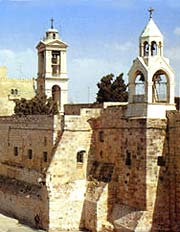 It is the oldest of churches, and Jerusalem is the holy city for the followers of all Christian denominations. Here are the main ones Christian shrines: Golgotha - place death on the cross Christ, the Holy Sepulcher (the place of His burial) with the Church of the Resurrection. The Jerusalem Church is headed by the Patriarch of the Holy City of Jerusalem.
It is the oldest of churches, and Jerusalem is the holy city for the followers of all Christian denominations. Here are the main ones Christian shrines: Golgotha - place death on the cross Christ, the Holy Sepulcher (the place of His burial) with the Church of the Resurrection. The Jerusalem Church is headed by the Patriarch of the Holy City of Jerusalem.
According to tradition, the patriarch and most of the highest hierarchs are Greek, while most of priests and laity are Arabs. The Patriarchate unites six archdioceses. There are parishes of the Jerusalem Church in Israel, Jordan, as well as in Athens, Istanbul and Nicosia (Cyprus). The Julian calendar is used, and the liturgical languages are Byzantine Greek and Arabic.
Russian Orthodox Church
The period of independence of the Russian Church from the Patriarchate of Constantinople actually began on December 15, 1448, when the Russian bishops independently elected Metropolitan Jonah as their primate. On January 26, 1589, during the visit of the Patriarch of Constantinople Jeremiah to Moscow in the Assumption Cathedral of the Kremlin, Metropolitan Job of Moscow was elevated to the patriarchal rank. The residence of the Patriarch of Moscow and All Rus' is located in Moscow. In addition to Russian dioceses, under the control of the Moscow Patriarchate there are bishoprics in the CIS countries, a number of dioceses in Western and Central Europe, North and South America. The Russian Orthodox Church also includes the Ukrainian Orthodox Church, which received the right of self-government in 1990, and the autonomous Japanese Orthodox Church (originating from the Russian Ecclesiastical Mission established in 1870 and the diocese formed in 1880). In 1994, the Russian Orthodox Church, with its autonomous churches, numbered 19 metropolises, 37 archdioceses and 75 dioceses.
The Russian Orthodox Church performs services according to the Julian calendar. The main liturgical language is Church Slavonic. In a number of cases, the languages of peoples converted by Russian missionaries are used (including Japanese); They also serve in national languages in Moldova and the Baltic countries. In Western European parishes, services are performed in the main European languages.
Georgian Orthodox Church
 Already in the 4th century. Georgian king Mirian declared Christianity the state religion. According to legend, King Vakhtang I Gorgasal, who united Georgia, proclaimed autocephaly of the Georgian Church in 487. It was headed by the Catholicos, whose residence was in Mtskheta, the ancient capital. Subsequently, there were several Catholicoses in Georgia, but Mtskheta was always considered the first. Now the head of the Georgian Church bears the title of Catholicos-Patriarch of all Georgia, Archbishop of Mtskheta and Tbilisi. The residence is located in the city of Tbilisi. Georgian Church includes 15 dioceses. Divine services are performed according to the Julian calendar, mainly in the Old Georgian language. In some parishes they serve in Church Slavonic, Greek and other languages (primarily the languages of the peoples of Georgia).
Already in the 4th century. Georgian king Mirian declared Christianity the state religion. According to legend, King Vakhtang I Gorgasal, who united Georgia, proclaimed autocephaly of the Georgian Church in 487. It was headed by the Catholicos, whose residence was in Mtskheta, the ancient capital. Subsequently, there were several Catholicoses in Georgia, but Mtskheta was always considered the first. Now the head of the Georgian Church bears the title of Catholicos-Patriarch of all Georgia, Archbishop of Mtskheta and Tbilisi. The residence is located in the city of Tbilisi. Georgian Church includes 15 dioceses. Divine services are performed according to the Julian calendar, mainly in the Old Georgian language. In some parishes they serve in Church Slavonic, Greek and other languages (primarily the languages of the peoples of Georgia).
Estimating the number of believers is a rather difficult problem. Some data and estimates are collected here.
Countries geographically and culturally oriented towards Orthodoxy
Albania - 165,000
Belarus - 6,000,000
Bulgaria - 6,000,000
Greece - 9,000,000
Georgia - 2,000,000
Egypt - 18,000
Jerusalem and Jordan - 15,000
Cyprus - 550,000
Lebanon - 370,000
Macedonia - 1,000,000
Moldova - 3,000,000
Poland - 1,000,000
Russia - 50,000,000 - 80,000,000
Romania - 19,800,000
Serbia - 8,000,000
Syria - 300,000
Slovakia - 80,000
Türkiye - 5,000
Ukraine - 20,000,000
Finland - 58,000
Czech Republic - 10,000
Estonia - 75,000
"Diaspora"
Australia - 1,000,000
Argentina - 140,000
Benelux - 67,000
Brazil - 180,000
UK - 450,000
Germany - 660,000
Italy - 32,000
Canada - 680,000
Mexico - 75,000
USA - 5,000,000
France - 150,000
Chile - 70,000
Switzerland - 23,000
Sweden - 94,000
Missions
Kenya - 400,000
South Africa - 38,000
Total in the world - 217.948.000
Africa -29.645.000
Australia and Oceania -666,000
Asia -14.881.000
Europe -165.795.000
Latin America -481.000
North America -6.480.000
Data on the number of Orthodox Christians is available in the reference book "Eastern Christian Churches. Church Historical Directory" (Russian edition 1999). The first edition of the reference book was 1995; for the Russian edition, the factual information was updated by the author as of 1999. The author is Catholic priest Ronald Roberson, a member of the Pontifical Council for Promoting Christian Unity.
Local Orthodox Churches
Albanian Orthodox Church - 160,000
Patriarchate of Alexandria - 250,000
Patriarchate of Antioch - 750,000
Bulgarian Orthodox Church - 8,000,000
Greek (Helladic) Orthodox Church - 9,025,000
Georgian Orthodox Church - 3,500,000
Jerusalem Patriarchate - 130 000
Cypriot Orthodox Church - 442,000
Patriarchate of Constantinople - 3 500 000
Polish Orthodox Church - 570,000
Orthodox Church in America - 1,000,000
Orthodox Church in the Czech and Slovak Republics - 55,000
Romanian Orthodox Church - 19,800,000
Russian Orthodox Church - 80,000,000
Serbian Orthodox Church - 8,000,000
Autonomous Churches and Dioceses (at the beginning of the 1990s)
Orthodox Church of Mount Sinai - 900 people.
Albanian Orthodox Diocese America - 5,100
American Carpathian Orthodox Greek Catholic Diocese - 50,000
Russian Orthodox Archdiocese in Western Europe -100,000
Ukrainian Orthodox Church of Canada - 120,000
Finnish Orthodox Church - 57,000
Japanese Orthodox Church - 30,000
Uncertain canonical status
Macedonian Orthodox Church - 1,200,000
Russian Orthodox Church Abroad - 150,000
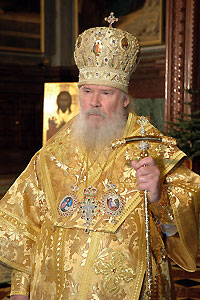 The Russian Orthodox Church is the largest religious association in Russia. Currently it has 123 dioceses in different regions Russia, in the near and far abroad.
The Russian Orthodox Church is the largest religious association in Russia. Currently it has 123 dioceses in different regions Russia, in the near and far abroad.
Since 1990, the Primate of the Russian Church has been the HOLY PATRIARCH ALEXI II - the fifteenth Patriarch in its history, who governs together with the Holy Synod.
Today in the Russian Orthodox Church there are 128 dioceses (for comparison, in 1989 there were 67), more than 19,000 parishes (in 1988 - 6893), about 480 monasteries (in 1980 - 18). Pastoral ministry carried out by more than 150 bishops, 17,500 priests, 2,300 deacons.
The network of Orthodox educational institutions is led by the Educational Committee. Currently there are 5 theological academies (in 1991 - 2), 26 theological seminaries (in 1988 - 3), 29 theological schools, which did not exist at all until the 90s. Open 2 Orthodox University and the Theological Institute, 1 women's theological school, 28 icon painting schools. Total There are about 6,000 students in theological schools. Educated educational establishments, designed to spread religious education among the laity. Coordinates this important work Department of Religious Education and Catechesis.
Forms religious education and catechesis of the laity are very diverse: Sunday schools at churches, clubs for adults, groups for preparing adults for baptism, Orthodox kindergartens, Orthodox groups in state kindergartens, Orthodox gymnasiums, schools and lyceums, Orthodox courses catechists. Sunday schools are the most common form of catechesis.
In the field of charity, work is carried out at the church-wide level through the Department of Church Charity and Social Service.
It is worth noting a number of successfully functioning medical programs. Among them, the work of the Central Clinical Hospital of the Moscow Patriarchate in the name of St. Alexis, Metropolitan of Moscow, deserves special attention. In the context of the transition of medical services to a commercial basis, this medical institution is one of the few Moscow clinics where examination and treatment are provided free of charge.
At the center mental health The Academy of Medical Sciences of Russia has created a psychiatric service that provides free help persons sent for treatment by parishes of the Moscow diocese.
These are just some of the examples of the specific activities of the above-mentioned Department.
In December 1990, the Holy Synod of the Russian Orthodox Church decided to create a church youth organization. As a result of this decision, at the First Congress of Orthodox Youth, the All-Church Orthodox Youth Movement was formed as an official youth organization established by the Russian Orthodox Church. The main goals that were set then for the Movement were to attract children and teenagers, boys and girls looking for their way to the temple, into the bosom of the Russian Orthodox Church, as well as uniting groups of young Orthodox Christians to participate in social service programs, restoration of monasteries and churches, conducting youth pilgrimages, establishing contacts with Christian peers from other countries.
External contacts of the Russian Orthodox Church are directed by the Department for External Church Relations of the Moscow Patriarchate, whose tasks include: the implementation of hierarchical, administrative and financial management of dioceses, monasteries, parishes and other institutions of our Church in far abroad; making decisions by the hierarchy concerning church-state and church-public relations; implementation of relations between the Russian Orthodox Church and Local Orthodox Churches, heterodox churches and religious associations, non-Christian religions, religious and secular international organizations, state, political, public, cultural, scientific, economic, financial and other similar institutions and organizations, the media.
Since 1989, the Department of External Church Relations has been headed by Metropolitan Kirill of Smolensk and Kaliningrad.
After our Church has gained true freedom, the missionary service of the Russian Orthodox Church is being revived. Faithful to the precepts of the Ancient Church and continuing the work apostolic ministry, The Russian Church testified about Christ even to the “ends of the earth” - Acts. 1.8, spreading the good news of the Word of life. The missionary achievements of our Church, the scope of its educational feat and activity, from Poland and the Baltic in the west to Alaska and California in the east, from Murmansk and Kamchatka in the North to the Black Sea region, the Caucasus, Central Asia and China in the south, required the greatest and constant effort of all spiritual, material and human forces. The names of Russian missionaries are deservedly included among the greatest missionaries of the Christian world. For example, let's name Saint Stephen of Perm, Venerable Tryphon of Pechenezh, the monks of Valaam and Solovetsky monasteries, Reverend Herman Alaska, as well as Equal-to-the-Apostles Nicholas, Archbishop of Japan, St. Metropolitan Innocent, Apostle of America, Archimandrite Macarius Glukharev, Apostle of the Altai Territory.
In the second half of the 19th century, the Orthodox Missionary Society was created, which greatly contributed to the missionary activities of the Russian Church. This missionary and educational activities The Church was interrupted by the revolution of 1917-1918, when all of us, according to the word of the prophet, “received double for all our sins from the hand of the Lord” (Is. 40:2).
Now that the time of repression and prohibition has passed into the past and the Church has again received the opportunity to freely testify to Christ, the need to revive the mission in modern world has become our most important and urgent task and at the same time an urgent need for society.
IN last years There is close interaction between the Russian Orthodox Church and the Armed Forces of the Russian Federation. For this purpose, the decision His Holiness Patriarch And Holy Synod was educated Synodal Department on interaction with the Armed Forces and law enforcement agencies.
Much has changed since the founding of the first Orthodox Church, the Patriarchate of Constantinople. Almost 2 thousand years have passed since then, parishes were created, and now there are fifteen officially recognized autocephalies in the world. And by no means the most ancient of them is the most numerous. 10 patriarchates of Orthodoxy - in our review.
1
The Russian Orthodox Church is the largest patriarchate in the world in terms of the number of parishioners. More than 80 million believers profess Orthodoxy in Russia, Ukraine, Belarus, Moldova, Japan, China and Mongolia, and other countries, and all of them are parishioners of the Russian Orthodox Church. In its independent form, as autocephaly, the Moscow Patriarchate has existed since 1448.
2
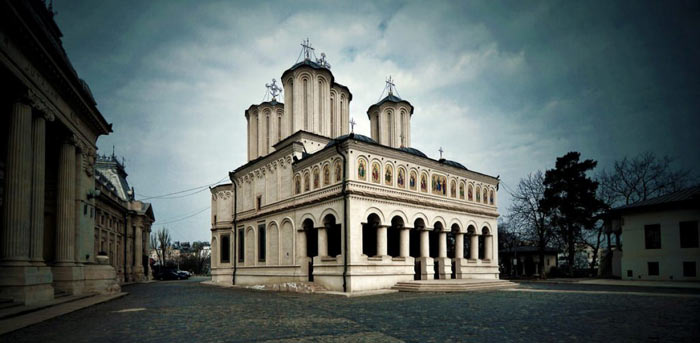
This patriarchy gained independence quite late - in 1885. The parishioners of the Romanian Church are residents of Romania, Moldova and Ukraine, in total there are 16 million of them. The Romanian Church is one of the few whose clergy are paid like civil servants.
3
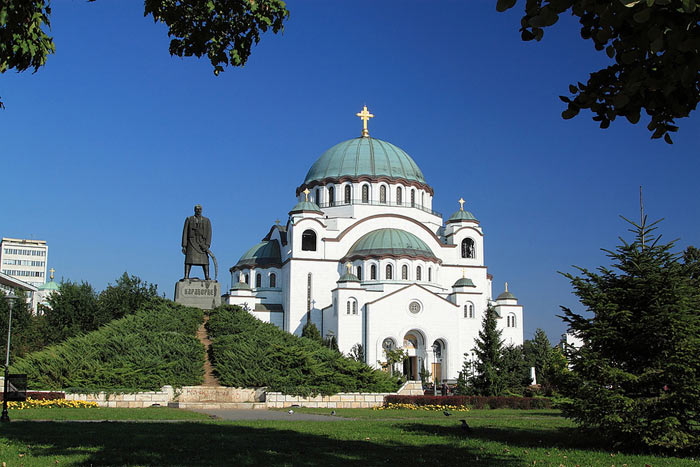
The Serbian Orthodox Church, founded in 1219, ministers to about 10 million believers in Macedonia, Croatia, Slovenia, Bosnia and Herzegovina, Montenegro and, of course, Serbia. This is one of the few Orthodox churches that celebrates Easter and other moving holidays according to the Gregorian calendar.
4
![]()
The Bulgarian Patriarchate is one of the newest patriarchates of Orthodoxy; it achieved autonomy only in 1953. The number of parishioners is about 8 million people.
5
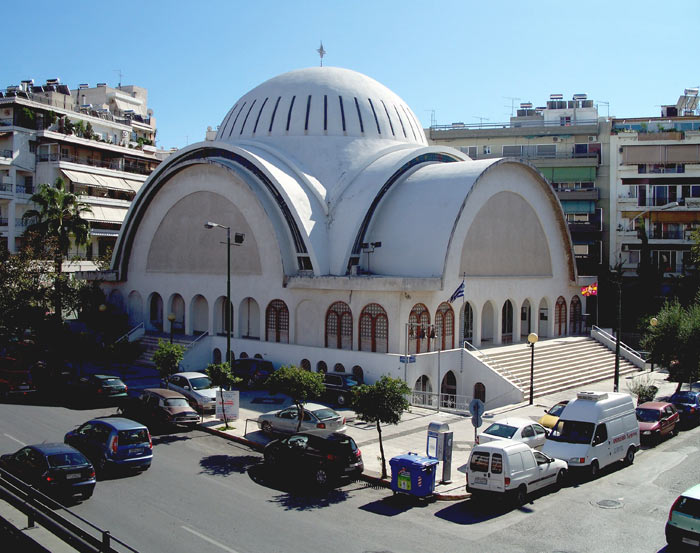
The Greek Orthodox Church ministers to the citizens of Greece and neighboring countries - about 8 million people. This church is the only one in Orthodoxy governed by the Synod, and not by the Primate. It is interesting that the Cypriot Orthodox Church exists completely independently from the Greek Church.
6

Orthodox Christians on the hottest continent on our planet, Africa, are parishioners of the Alexandrian Orthodox Church. There are 7 million of them across the continent. This is one of the oldest and most significant churches Christian world.
7

The Georgian Orthodox Church, although it is one of the most ancient strongholds of Orthodoxy, for a long time was part of the Moscow Patriarchate. The independence of the church was recognized only in 1943. Parishioners of the Georgian Orthodox Church (there are more than 4 million people) are citizens of Georgia and Turkey. By the way, this is the only church that prohibits its parishioners from marrying heterodox Christians.
8
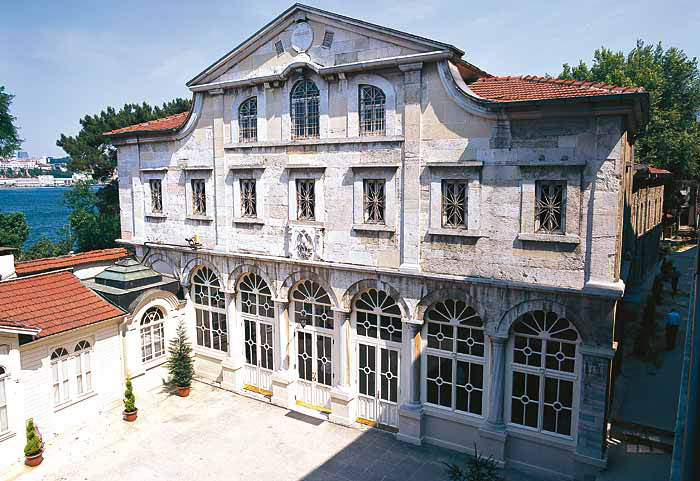
The Ecumenical (Constantinople) Patriarchate is one of the first Orthodox churches ancient world. The name of the Patriarchate is symbolic - its parishioners are scattered all over the world, and their total number exceeds 2 million.
9
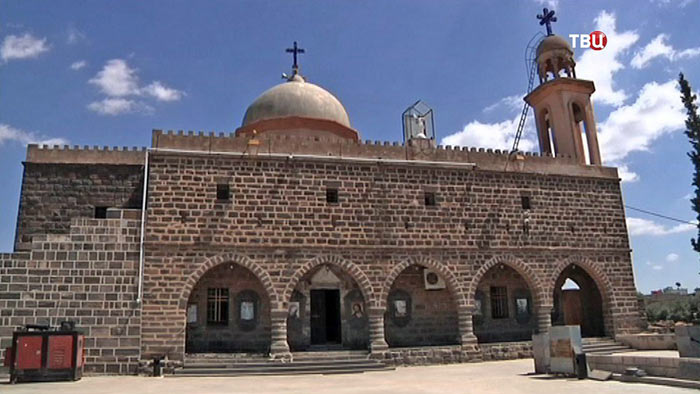
Parishes of the Antiochian Orthodox Church are scattered throughout the East: they are located in Syria, Lebanon, Iran, Turkey and Iraq, as well as in other countries. The number of its parishioners is about 2 million people. Worship is here, in addition to Greek language, occurs in Arabic and English.
10
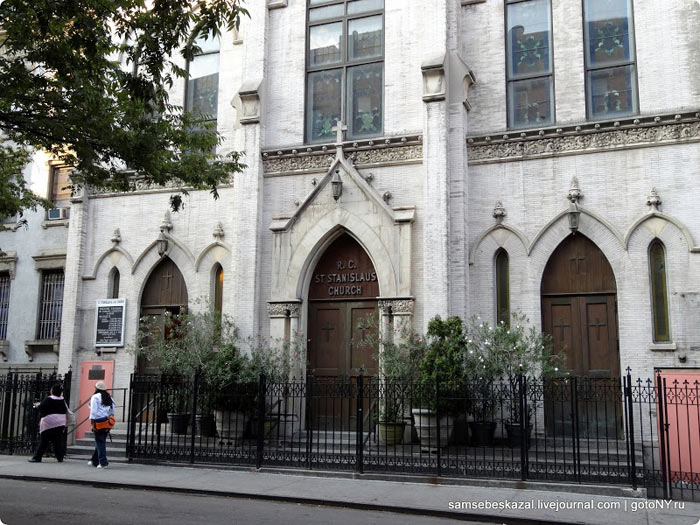
The North American continent has become the domain of patriarchy, the last to receive the status of autocephaly. This happened in 1970. Despite its youth, it is the fastest growing patriarchy: over the past 10 years, the number of parishioners here has grown by 21%.
It must be said that there are several quite large, but not recognized patriarchies. Among them are the Kiev Patriarchate, the Macedonian Patriarchate, and the Montenegrin Patriarchate. Despite the fact that the church is not directly connected with the state in these countries, they were all formed after the division of states into parts: the USSR, Yugoslavia, Federal Republic Yugoslavia.
In Orthodoxy there is such a thing as autocephaly, which belongs only to this confession and is absent in other areas of Christianity. Since those ancient times, when the Russian Orthodox Church became autocephalous, it not only became one of the other religious organizations world that had this status, but also took a leading position among them, receiving the title of “Third Rome”.
Which church is called autocephalous?
Among the many local churches, that is, religious and administrative structures operating within a certain state or region, those that enjoy the right to independently make decisions on all issues are called autocephalous. inner life, without coordinating them with the hierarchs of the Universal Church, of which they are a part.
The word “autocephaly” is borrowed from the Greek language and translated means “self-government,” which fully reflects the administrative independence of each autocephalous church, which at the same time is in direct liturgical (liturgical) communion with other similar structures.
The beginning of a new stage in the history of Orthodoxy
The emergence of the first churches based on the principle of autocephaly was the result of separation from Byzantine Empire its provinces. Freeing yourself from administrative control secular authorities, the population of these territories also sought to gain religious independence.
As a result, in parallel with the weakening of the empire and until its final fall in 1453, in the territories previously subordinate to Constantinople, there was a process of separation of patriarchates ─ local churches, headed by patriarchs, and metropolises, headed by metropolitans. Its result was the formation of a number of independent autocephalous Orthodox churches, which was a new stage in the history of Orthodoxy.

Legal rights of autocephalies
A characteristic feature of the structures being created was the right to independently elect their primates, supplied by local bishops. At the same time, other churches could not influence the course of the elections, and their leaders were only allowed to attend them as honored guests.
In addition to independence in electing their first hierarch, autocephalous churches are endowed with a number of powers, including:
- the ability to issue their own rules and laws, which include the Statutes of their constituent local churches;
- independent choice of one or another form of control and internal structure;
- the right to consecrate for oneself the holy myrrh, consisting of many aromatic substances and used in sacred ceremonies;
- canonization of one's own saints and establishment of days for their celebration;
- the right to make changes to existing rites (the order of prayers and ritual actions during worship) and chants, as well as the introduction of new ones that do not contradict established dogmatic teachings;
- complete independence in making administrative decisions;
- independence of the local church court;
- the possibility of convening your own Local Councils;
- the right to initiate the convening of Ecumenical Councils.
Framework limiting the rights of autocephaly
Each autocephalous church, despite the fullness of its internal self-government, is subject to restrictions determined by the principles of church-wide unity. Being constituent parts of the Universal Church, they must be identical with each other and separated from each other only administratively and territorially, while maintaining spiritual and doctrinal unity.
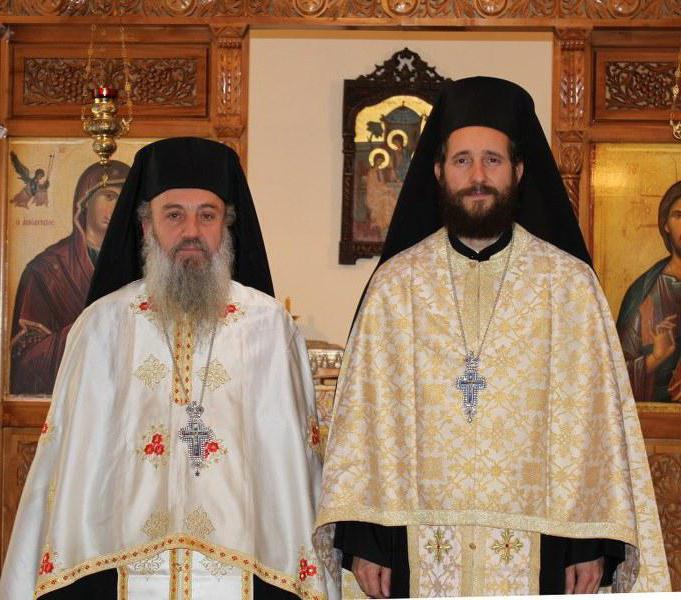
There are three areas of the internal life of autocephalous churches that are subject to restrictions. First of all, these are questions of a dogmatic nature. According to centuries-old tradition, only the Universal Church has the right to interpret the revealed truth, without in any way changing the general essence of the doctrine.
In addition, applying the canons (set of church rules), established by the Universal Church, each of the autocephalies is obliged to observe them without making any fundamental changes. And finally, general progress The worship services they perform must be based on the principles of uniformity regarding basic norms and correspond to official dogmatic teaching.
Unity of Orthodox Churches
A clear manifestation of the unity of the autocephalous Orthodox churches is the established practice of joint liturgical service in them, as well as mutual church commemoration of the first hierarchs. Their main connecting link is the Eucharist, common to all - the sacrament in which bread and wine are transformed into the Body and Blood of the Lord, which are then necessary during the communion of believers.
Recognized autocephalous churches
Currently, there are 15 officially recognized autocephalies in the world, each of which has its own characteristics, including the tradition determining the order in which they are listed. In the diptych of autocephalous churches adopted in Russia, first of all, those of them headed by patriarchs are mentioned. These include churches:
- Constantinople, numbering about 2.1 million people.
- Alexandria, whose followers are about 6.4 million people.
- Antioch (Greek), which includes 1 million 400 thousand people;
- Jerusalem ─ 131 thousand people.
- Russian autocephalous church, which is the most numerous in the world. Her followers, according to a social survey, are 100 million people.
- Georgian ─ 4.2 million people.
- Serbian, uniting almost 10 million believers.
- Romanian ─ 16.1 million people.
- Bulgarian, with about 8.2 million followers.
Following this, the diptych identifies 3 autocephalous churches governed by archbishops:
- Cyprus ─ 425 people.
- Hellas, as well as Antioch, located on the territory of Greece. 8.3 million people define themselves as its followers.
- Albanian ─ 720 thousand people.
In addition, the diptych marks 3 more autocephalies, the first hierarchs of which are metropolitans. Among them:
- Polish ─ 501 thousand people.
- Orthodox Church of Slovakia and the Czech Lands. It is the smallest, having no more than 150 thousand followers.
- American Orthodox Church - about 1.2 million people.
In addition to the above 15 autocephalous churches, there are also 6 autonomous ones, each of which is subordinate to one of them. Collectively, these churches embrace the entire world Orthodoxy. In none of the directions of Western christian church There are no autocephalies or autonomies.
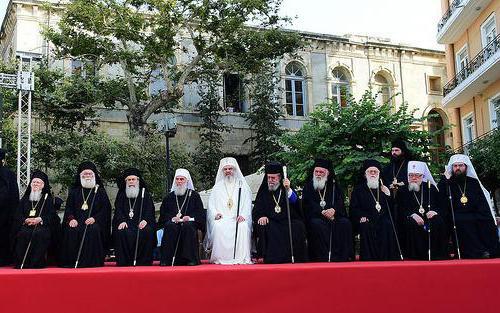
Unrecognized churches of the Old Believers and Russian immigration
Along with those autocephalies whose status is generally recognized, there are a number of churches formed in the 19th-21st centuries, although independent de facto, but officially not canonical. The most numerous of them is the Russian Orthodox Church Abroad (ROCOR), which appeared in the 20s of the last century as a religious association of emigrants who left Russia after the Bolsheviks came to power. It includes about 400 parishes located in different countries of the world and has about 15 million followers.
In addition, they include a number of Russian Orthodox religious organizations that do not recognize the supremacy of the Moscow Patriarchate and are based on the principles of self-government. These are, first of all, independent Old Believer structures, the emergence of which was a consequence of the church schism that shook Russia in the 50-60s of the 17th century.
Suzdal schism and unrecognized churches of Ukraine and Belarus
The so-called Russian Orthodox Autonomous Church, also called the Suzdal schism, should also be included in this category. Having come into conflict with the leadership of the Moscow Patriarchate, its representatives chose to create an alternative religious organization, not recognized by any of the Orthodox churches in the world.
Next comes the Ukrainian Orthodox Autocephalous Church, which calls itself canonical, but does not have this status. It should not be confused with the two other Ukrainian Orthodox churches belonging to the Moscow and Kyiv Patriarchates. It does not have Eucharistic communion with other churches and is not recognized by them. This structure takes its origin from the Polish Orthodox Church.
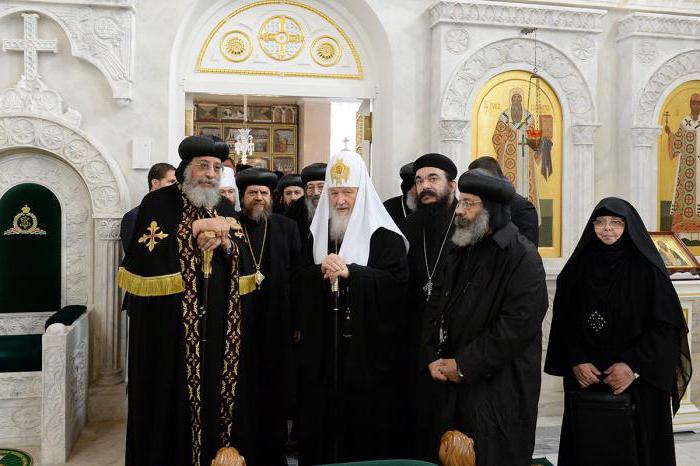
And finally, autocephaly, which was formed as a result of the merger of several non-canonical religious organizations of the Orthodox persuasion that appeared in the Soviet and post-Soviet periods on the territory of Belarus, cannot achieve recognition. Since 1944, their center has moved to New York, and the church draws its followers mainly from among the emigrants.
Circumstances due to which the Russian Orthodox Church became autocephalous
It is known that for several centuries after the baptism of Rus', its Church was subordinate to the Patriarchate of Constantinople. At the same time, the heads of the Roman catholic church did not stop trying to establish their dominance over her.
This was especially evident at the Council of Florence in 1439, where the Kyiv Metropolitan Isidore was persuaded to sign a union - an agreement that provided for the unification of the Eastern and Western Orthodox churches, their recognition of Catholic dogma with the right to preserve the former liturgical rites, as well as their subordination to the Pope.
This act caused protest on the part of Russians and served as an impetus for the beginning of the process, the result of which was the formation of the Russian Orthodox Autocephalous Church. The protege of the Patriarch of Constantinople, Metropolitan Isidore, was removed from office for his apostasy and imprisoned in the Miracle Monastery, after which his department remained vacant for several years. In 1448, on the initiative of Grand Duke Vasily II the Dark, it was occupied by Metropolitan Jonah, who was arbitrarily elected in Moscow.
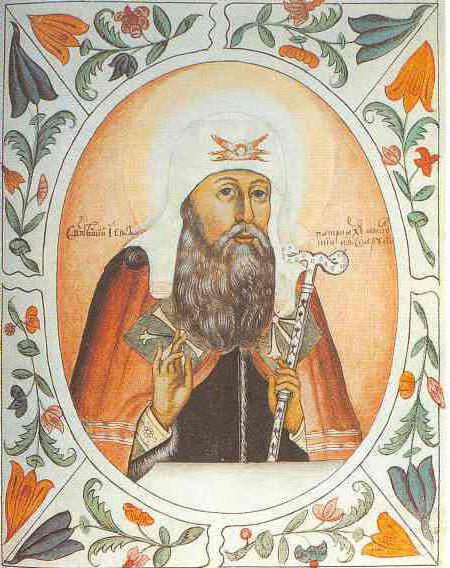
How and when did the Russian Church become autocephalous?
The emergence of its own metropolitan was an important milestone in the history of the state. Formally, at that time, the proclamation of the Russian Autocephalous Church had not yet taken place, but in fact it began to act without regard to Constantinople. Its independence was significantly strengthened after Byzantium was captured by the Ottoman conquerors in 1453.
In view of the difficult situation that developed after this, the Patriarchs of Constantinople, having lost their former influence, were forced to listen to the will of the Moscow autocrats. As a result, the head of the Church of Constantinople, Jeremiah II, in 1589 installed Archbishop Job of Rostov on the Russian patriarchal throne, who became the first Patriarch of Moscow and All Rus'. His portrait is presented in the article. Since this year, the autocephalous Church of Russia has finally gained its legitimacy.
Legal aspects of granting autocephaly
In the modern world, issues related to the granting of autocephaly to certain churches are often extremely politicized, and their decisions are made without taking into account canon law. The reason for this phenomenon sometimes lies in the fact that autocephaly is seen primarily as evidence of national self-sufficiency and independence. This extremely incorrect approach often leads to various internal church disorders and schisms.
There are many points of view on the procedure for granting autocephaly, among which two dominate. According to one of them, whose supporters are representatives of Poland, Romania, Russia and Bulgaria, each currently recognized autocephalous church, subject to certain prerequisites, should have the right to grant the same status to any part of its followers, giving them the opportunity to create an independent religious structure.

At the same time, the Churches of Constantinople, Greece, Alexandria, and Jerusalem insist that only the Patriarch of Constantinople should have such a right. The final decision on the issue can be made at the World Council of the Orthodox Church, the convening date of which is still unknown.
Our compatriots also take an active part in the work of the pre-conciliar commissions, and their opinions are listened to with special attention, since since the time when the Russian Church became autocephalous, it has been one of the most influential religious organizations in the Orthodox world.











"pros" and "cons" of democracy
Surveyor. Who is a surveyor? Description of the profession. Profession surveyor Surveyor training
Magellanic clouds: who are they?
Pepper Steak Sauce Creamy Pepper Sauce
How to create a competent portfolio for a designer